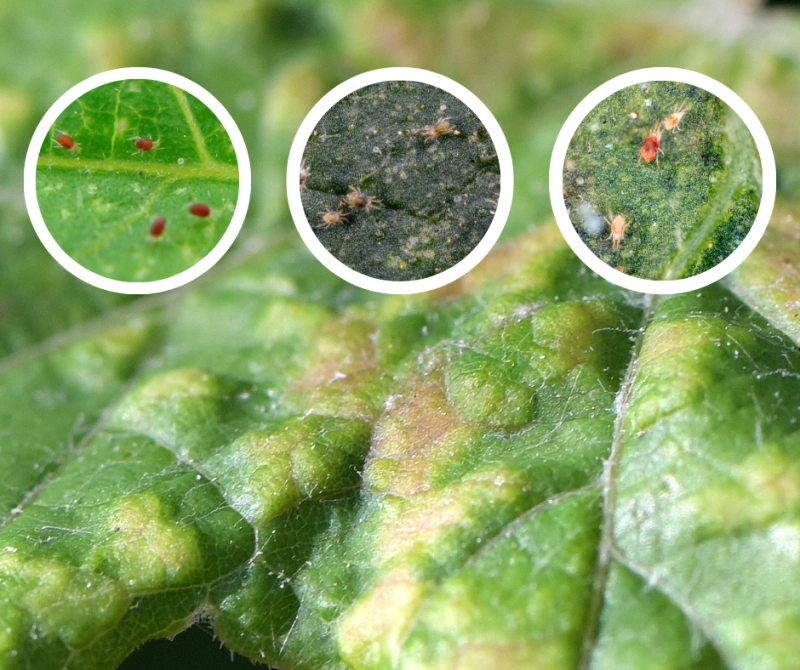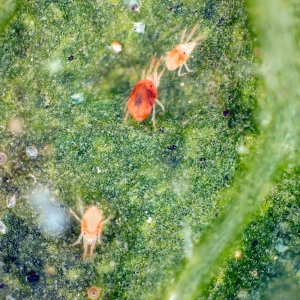As spider mites are extremely small, it can sometimes be difficult to know you have an infestation, until you start to see damaged and discoloured leaves.
What does spider mite damage look like?
This damage usually shows up as brown and yellow spots and mottling / small lumps on leaves. The leaves can look paler and dull in colour, eventually turning yellow, or yellow / white, and dying completely. If there is a heavy infestation, whole plants can die as a result of spider mite feeding.
This latter stage discolouration can be mistaken for a mineral deficiency causing you to apply unnecessary and incorrect nutrition to try and attempt a fix.
Before attempting to adjust nutrition, it is always worth checking the leaves carefully and in close up! Use a magnifying glass and inspect the underside of affected leaves. If you don’t have a magnifying glass, try taking a photo with your phone and then zooming in.
If spider mites are present, you will see tiny mites and round eggs. Fine silk webbing will also be present where there is a large infestation.

You may also see eggshells and tiny white cast skins. If you place a piece of white paper under the surface of the leaf and tap or shake the plant, you will see the mites as tiny specks moving across paper.
Despite being known as red spider mites, they are light green in colour and only become red when they are less active.
The mites cause the damage to leaves by feeding on them. It is the death of the cells that cause the discolouration and mottling.
How can you stop spider mites without chemicals?
There are several chemical controls available that will kill spider mites, however, for a chemical-free solution, we’d recommend a biological control - predatory mites known as Phytoseiulus persimilis and Amblyseius andersoni.
Both species are very small predatory mites. They kill spider mites by attacking and sucking the insides of their prey and will give good control indoors and outdoors.
You would select Amblyseius andersoni when treating areas up to 75m2 and Phytoseiulus persimilis for larger areas up to 500m2. Phytoseiulus persimilis can be used when the temperature is between 15ºC and 30ºC and Amblyseius andersoni can be used at lower and higher temperatures – from 6°C up to 40°C.
Predatory females lay eggs on the spider mite hot spot. The hatched larvae then eat up to five adults a day or 20 eggs a day depending on the stage – until they become adult mites.
Phytoseiulus persimilis is widely used in commercial greenhouses where chemicals cannot be used – on organic crops for example. It can also be used outdoors and has had much success treating spider mites in strawberry plants.
It feeds on all stages of the spider mite lifecycle but shows a preference for the eggs. Both species will thrive when temperatures are warm and humid.
The reproduction rate of the predatory mite is roughly twice that of red spider mite, meaning their populations can increase faster than spider mite, quicky eliminating whole populations.
Find our non-chemical biological control for spider mites here.




